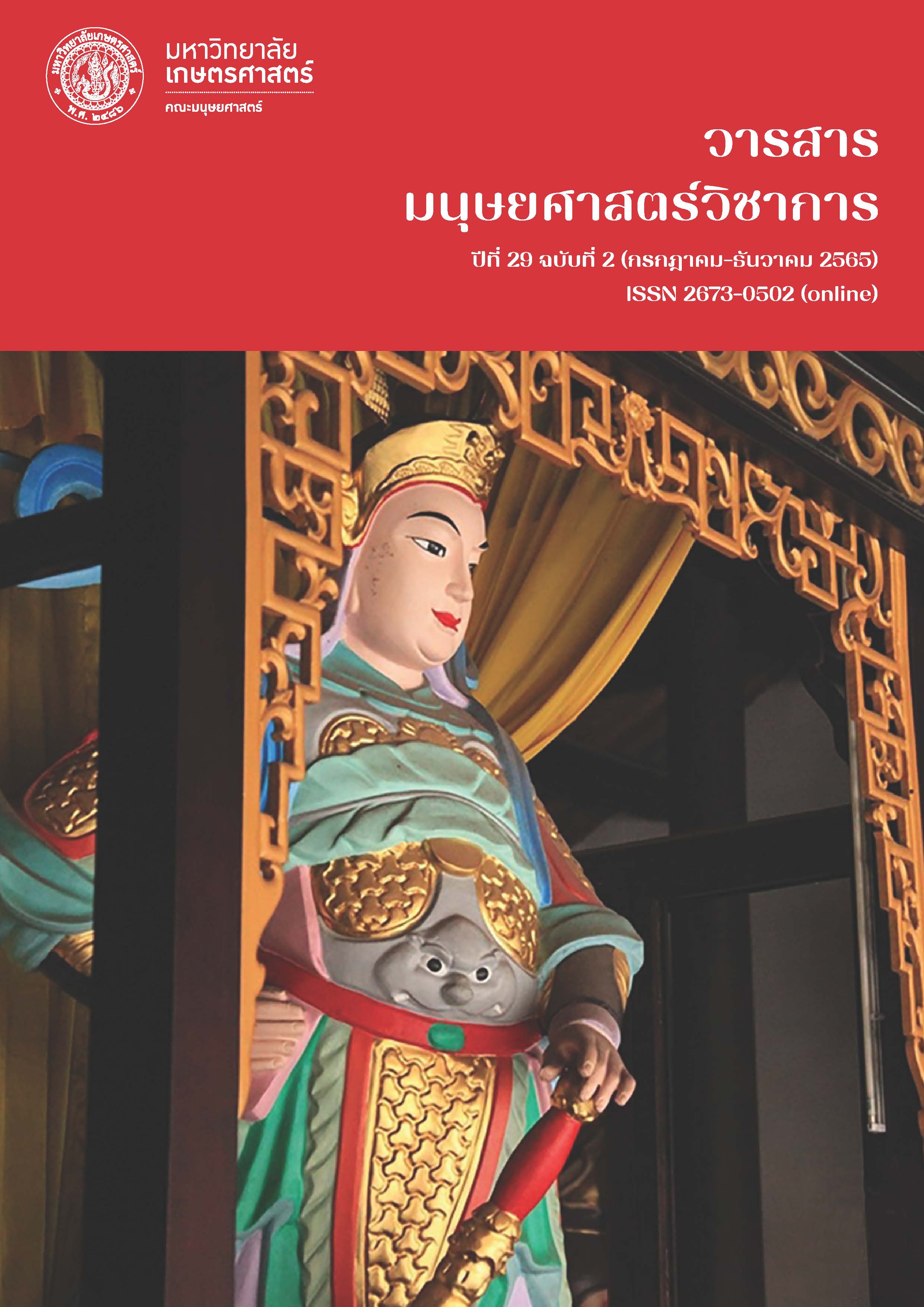Drag Queen of Thousand Faces: Aesthetics from Overlapping of Communication Elements in Postmodern Age
Main Article Content
Abstract
This article aimed to analyze the characteristics of the relationship between analogic message code and digital message code and elements in communication by drag queen makeup in digital age. The study revealed that drag queen makeup communication required shifts between the analogic and the digital message code for understanding. Furthermore, convergence communication with basic elements was able to act, change status and collaboratively be a code for makeup meaning.
Article Details

This work is licensed under a Creative Commons Attribution-NonCommercial-NoDerivatives 4.0 International License.
References
กาญจนา แก้วเทพ และสมสุข หินวิมาน. (2551). สายธารนักคิดทฤษฎีเศรษฐศาสตร์การเมืองกับสื่อสารศึกษา. กรุงเทพฯ: ภาพพิมพ์.
กิตติ กันภัย. (2551). จิตวิทยาการสื่อสาร. กรุงเทพฯ: โครงการตำราคณะนิเทศศาสตร์ จุฬาลงกรณ์มหาวิทยาลัย.
ชานันท์ ยอดหงษ์. (2560). DRAG QUEEN: เพราะเพศเป็นสิ่งประดิษฐ์และไม่ได้ติดตัวแต่กำเนิด. สืบค้นเมื่อ 12 ธันวาคม 2563 จาก https://spectrumth.com/2019/07/20/drag-queen.
ชีรา ทองกระจาย. (2561). ความเท่าเทียมกันทางเพศสภาพ. ใน เอกสารชุดวิชาการพัฒนามนุษย์ในบริบทโลก. นนทบุรี: มหาวิทยาลัยสุโขทัยธรรมาธิราช.
ณชรต อิ่มณะรัญ และกฤษณ์ ทองเลิศ. (2562). การดำรงอยู่และสุนทรียภาพของสัญรูปนาคในสื่อบันเทิงไทย. วารสารนิเทศศาสตรปริทัศน์, 23(3), 183-195.
ถิรนันท์ อนวัชศิริวงศ์ และคณะ. (2547). สุนทรียนิเทศศาสตร์ การสื่อสารการแสดงและสื่อจินตคดี. กรุงเทพฯ: โครงการสื่อสันติภาพ คณะนิเทศศาสตร์ จุฬาลงกรณ์มหาวิทยาลัย.
ทวีรัก กลิ่นสุคนธ์. (2541). การศึกษากระบวนการผลิตและการบริโภคภาพเขียนลอกแบบในประเทศไทย (วิทยานิพนธ์มหาบัณฑิต สาขานิเทศศาสตร์). จุฬาลงกรณ์มหาวิทยาลัย, กรุงเทพฯ.
ภูมิชนะ หนูชูแก้ว และโมไนยพล รณเวช. (2563). การบริหารรายการโทรทัศน์เฉพาะกลุ่ม: รายการแดร็ก เรซ ไทยแลนด์. วารสารการสื่อสารและการจัดการ นิด้า, 6(1), 44-57.
ริรินดา เติมไทยมงคล. (2551). ปรสิตการสื่อสารในรายการโทรทัศน์เล่าข่าวเช้า. นิเทศสยามปริทัศน์, 8(8), 3-19.
ศิริชัย ศิริกายะ. (2558). ข้อเสนอแนะประเด็นการสื่อสารเพื่องานวิจัยนิเทศศาสตร์ตามแนวคิด “ปฏิปักษ์สัมพันธ์” (Symbiosis) ในยุคดิจิทัล. วารสารนิเทศสยามปริทัศน์, 14(16), 7-11.
ศิริชัย ศิริกายะ. (2562). การสื่อสารกับอเสถียรตรรกะ. วารสารนิเทศสยามปริทัศน์, 18(2), 8-12.
ศิริชัย ศิริกายะ สุธี พลพงษ์ และเจตน์จันทร์ เกิดสุข. (2560). จังหวะของการสื่อสารในรายการโทรทัศน์ประเภทเรียลลิตีเกมส์โชว์ที่คัดสรร. วารสารนิเทศสยามปริทัศน์, 16(20), 57-65.
อารีรัตน์ แพทย์นุเคราะห์. (2552). การกำกับความหมายของแผนที่ท่องเที่ยวบนสื่ออินเทอร์เน็ต (วิทยานิพนธ์มหาบัณฑิต สาขาการสื่อสารมวลชน). จุฬาลงกรณ์มหาวิทยาลัย, กรุงเทพฯ.
Dickson, H., Thomson, C., & O’Toole, P. (2016). A Picture is worth a thousand words: Investigating first year chemistry students’ ability to visually express their understanding of chemistry concepts. International Journal of Innovation in Science and Mathematics Education, 24(1), 12-23.
Fiske, J. (1982). Introduction to Communication Studies. New York: Methuen & Co. Ltd.
Genette, G. (1997). Paratexts: Thresholds of Interpretation (C. Newman & C. Doubinsky, Trans.). Lincoln: University of Nebraska Press.
Hirschman, A. (1970). Exit, Voice, and Loyalty: Responses to Decline in Fims, Organizations, and States. Cambridge, MA: Harvard University Press.
Hook, J. N., & Stevens, Robert L. (1967). Competence in English. New York: Harcourt, Brace & World.
Jakobson, R. (1962). Selected Writing, 4 Roles. The Hague: Mouton.
Jakobson, R. (1987). Language in Literature. London: The Belknap Press of Harvard University.
Schramm, W. (1964). Mass Media and National Development. Stanford, CA: Stanford University Press.


